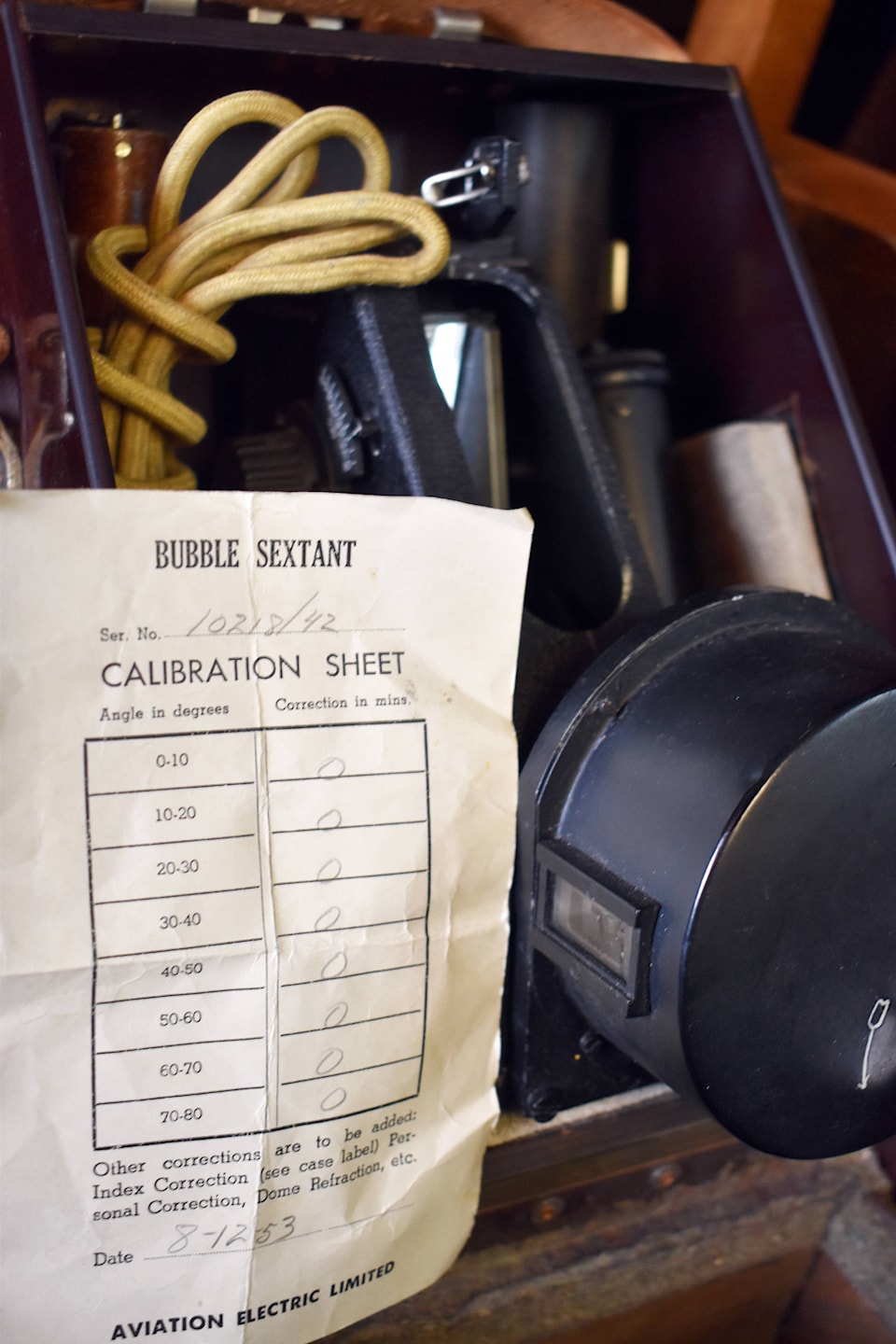Do you ever think about all of those strange items up in the attic that your grandparents have gathered over the years?
The Curiosity Shop on Main Street in Keremeos has them all beat.
For 45 years, owners Kelly and Randy Bickner have collected a wide variety of special items.
A few of those items have stories attached to them, such as the trophy from Port Alberni that had found its way to the shop back in 2014 before it was returned to the island.
READ MORE: Hidden treasures of the Curiosity Shop; antique plastic topped boxes
In the final part of our series, we look at a piece of navigation equipment from the Second World War.
The first item is a very interesting piece of Commonwealth military history.
The A.M. 6B/218 Bubble Sextant, model MK.1XA appears to the original version made in England during the war, with a calibration sheet from the Montreal-based Aviation Electric Limited in the case with it.
“This would go in the airplane, this is a war-time piece,” said Kelly. “It’s even got the calibration sheet in there.”
Made by Henry Hughes and Son Limited, this was the 10,218th sextant made in 1942 based on the case-card. The company was founded in the early 19th century, with Henry known to have been working at least 1840 on Commercial Road in London, to Tower Hill in 1867, the business adding the ‘and Son’ when Alexander Hughes joined him. The company built timekeeping and nautical navigation equipment, collaborating with others in the industry in 1941, which lead to the amalgamation into Kelvin and Hughes in 1947.
During the First World War, Henry Hughes and Son developed the first airplane compass, and during the Second built the bubble sextant for the Royal Air Force, such as the one that found it’s way to the Curiosity Shop. Normal sextants are unsuitable for use at high altitudes, because they work by having the user level with the horizon. To counter this, the bubble of the bubble sextant is used to create an artificial horizon to measure against.
READ MORE: Hidden treasures of the Curiosity Shop
The 1XA Sextant was a revision to the existing IX model by adding a clockwork averager, in order to account for any movement and shaking over a two minute measurement period.
Based on the design of the box and the attached calibration sheet, the sextant was used by the Canadian planes, after going through Aviation Electric Limited, the company that would be acquired by Honeywell in the 1970s. Aviation Electric Limited’s own 1XA sextants, as shown in the University of Toronto and Ingenium Canada collections, have the Aviation Electric Limited sticker on the case.
Models of the Hughes IXA bubble sextant are held in the collections of the Smithsonian Air and Space Museum, the Imperial War Museum, and the Univerisity of Queensland Physics Museum.
@PentictonNews
newstips@pentictonwesternnews.com
Like us on Facebook and follow us on Twitter.
To report a typo, email: editor@keremeosreview.com.
<>